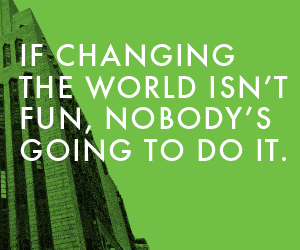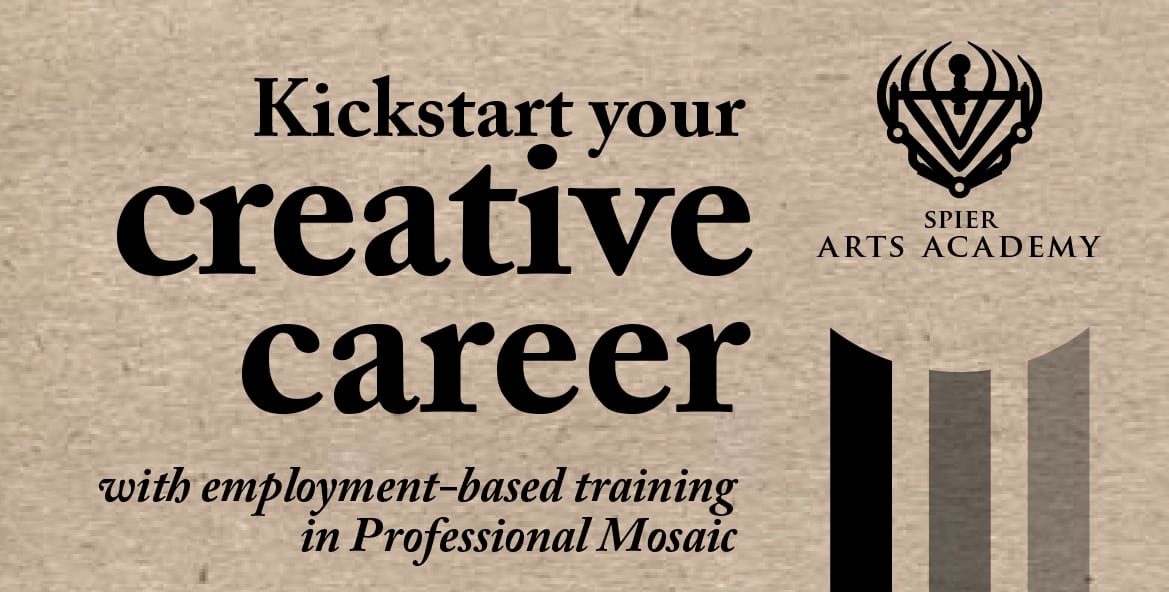Rodney Place wonders whether too much Contemporary Art Seriousness might usher in the end of things as we know them
In his essay ‘Everyman a Professional’ written more than fifty years ago, Harold Rosenberg predicted that the context of art would lie in the more reliable value-adding markets of money (through advertising) and meaning (through academia) than in the unreliable situation of artists’ thinking-by-making.
The FNB Joburg Art Fair has constructed this postmodern vision perfectly with the help of European diplo-cultural entities and commercial sponsors and galleries. In this God-and-Caesar arrangement, the European diplo-cultural entities take care of the artists, fringe inhabitants in a rich world, while the galleries relieve the artists of objects deemed valuable enough to be attractive to the bourgeoisie.
Appropriately the Art Fair takes place just a stone’s throw from the Michelangelo Hotel in Sandton and close to where the bronze Nelson Mandela presides over a repro-Siennese shopping mall, probably wondering whether these were the very same rocks he broke up on Robben Island for more than twenty years and that ruined his eyesight.
Traditionally in Sandton, Money-meets-Meaning and defies, ridicules and sanitises content. South Africa practiced postmodernism during apartheid and is experienced in its management. It wasn’t just a (French) theory of de-construction and re-appropriation – colonial nostalgia for exotic ethnicity, race and gender that could now be replayed divisively in-situ rather than in nineteenth-century museums by European cultural operators. The post-humanist Embrace of Africa and Other Places was gleefully sponsored by the United Social Democratic States before they started running out of largesse and fell back on their tribal instincts.
The Art Fair fits Sandton like a prophylactic glove, reinforcing its immunity and making art safe for the world to see in a World Class African City. This is definitely no under-construction African city in which art might be seen to be making a difference rather than no difference at all. Sandton hosts prime-time socialite occasions every week with spectacular staging techniques and themes ranging from fashion, to design, to cars, to furniture, to food, to art, to travel, as part of its curriculum of charm. It’s a finishing school for British bus drivers who became instant aristocrats in South Africa, and its relentless conversion legacy has continued after 1994.
Perhaps the problem in South Africa as much as in Contemporary Art lies in the idea of infrastructure as top-down consumption – an idea that what one could or should be making is already available. So it’s more about service delivery or distribution, about expecting the given to arrive. In this, artists are merely forlorn constituents waiting for trickle-down – received ideas they can step into like a spotlight, or money, or both. It’s the difference between the cooked and the raw; thought and thinking; choice and opportunity; career and work; jobs and enterprise. This is a world of full stops rather than continuous sentences trying to form ideas.
Certainly the northern suburbs infrastructure is impressive enough for visitors to stop in their tracks, gasp and remark on how ‘un-African’ it is. Sandton is a Contemporary Art Show in itself, a triumph of displacement where everything is only symbolic, so you can’t hurt yourself. In this communion with friendly ghosts, blood and flesh are turned into Merlot and Woollies Assorted Cocktail Crackers, and Mike’s Sistine Cucina is a perfect place to catch up with friends. Art is just one good excuse amongst many for reliable socialising; it seldom demands concentrated engagement like novels or movies.
But perhaps more insidiously in South Africa, as in Contemporary Art, the idea of infrastructure also embraces and asserts an idea of History as top-down Inheritance disassociated from the messy uncertainties of commerce, the future and the continuities of individual lives, vital in the making of new ideas in a new democratic country. These are often the raw material and work of art as it has traced and tries to trace the still-developing human proposition and is allowed to get it wrong.
How did this oppressive situation of Infrastructure-as-History come about?
The owner of a Vietnamese restaurant I frequented when I lived in Philadelphia had been a South Vietnamese collaborator who clung to the undercarriage of a US army helicopter as the Americans exited Saigon in a hurry after Kissinger negotiated the end of the Vietnam War. Although the restaurant owner was grateful to have his life saved, he complained that the Vietnamese community in Philadelphia was deeply conservative compared with Vietnam. He put this down to the problem of newly displaced cultures: they spent most of their time misremembering rather than getting on with the future.
Infrastructure-as-History is an assertive and sustained act of fabricated White Misremembering in South Africa that requires everyone to misremember in the same incorrect way, preferably in English. In the immigrant USA, always impatient to get on with the future and frustrated when it can’t, this misremembering is made of chicken wire covered with plaster and usually falls apart in a short time. Caesar’s Palace in Atlantic City made an application to the New Jersey Arts Council to have their chicken wire Caesars restored – a couple had lost their uplifted arms. I think they got the money because no one was that interested in misremembering although there were funds set aside.
In South Africa White Misremembering registers as Weight meant to last forever as if to counter anxiety about never really belonging and having no real content to contribute. Ozymandian stage sets like the Michelangelo Hotel and Sun City are built to survive Doomsday.
You could sense the pressure of this prefabricated Misremembering at the Art Fair, as if the psychotic Caucasian Craft of Weight were convincing in itself. Angus Taylor’s Die Omdop van Doodsekerheid is a case in point. Made as a block of earth, the dimensions of a dug grave that first sat naked on a floor, at the Art Fair it was elevated on blond Scandinavian pine railway sleepers. Why? Because the security guard said, ‘Jy kannie kaalvoet in Sandton loop nie; get some lekker high heels?’
Or was it more that art should be gravely sanctified as Art? Mistaking it for part of Sandton’s construction fetish might cause consternation, even embarrassment. Ironically, given the furniture shop feeling of the Everard Read stand, the piece seemed to want to be purchased and taken home immediately – any home from Springbok, to Lenasia, to Soweto, but probably not Bryanston where the dead are usually incinerated. The blond pyres could then be burned, putting it back on the ground to rest in peace and make more local sense. To remain in the Sandton Convention Centre it would need a golf tee and ball in the grass on top, or maybe just a ball in the rough and a muddy divot that had landed squarely in the middle of a dining room picture. There could be a recording. Angus: ‘Shit, Mom’s painting!’ Mom: ‘Angus, if you want to play that ball game, I’ve told you to play outside.’
Read more in the current issue of Art South Africa 11.2, on shelves now.
Rodney Place
ORIGINALLY PUBLISHED IN ART SOUTH AFRICA V11.2



